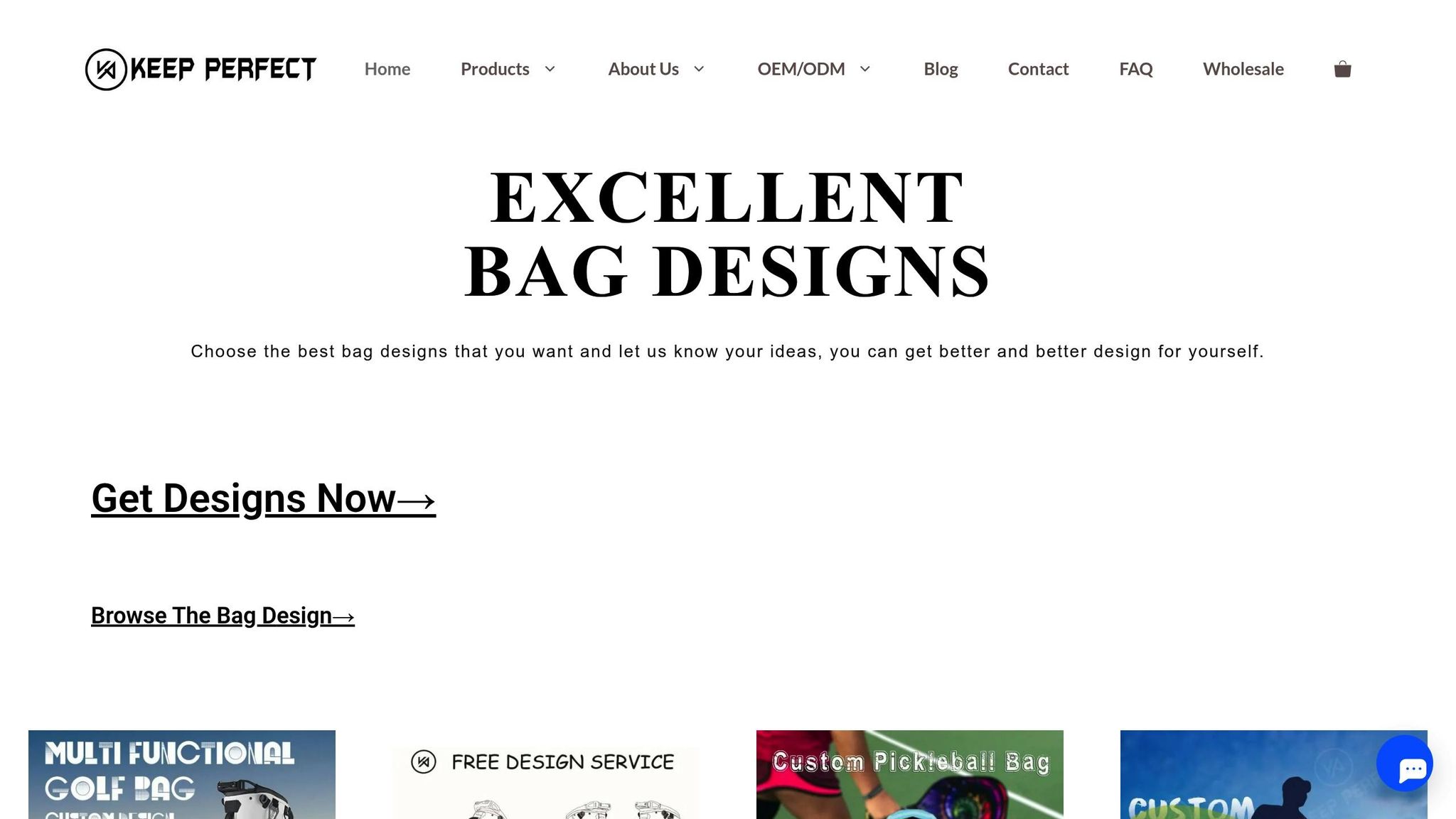Creating custom backpacks that match Tumi-level quality requires a focus on premium materials, precise craftsmanship, and personalized branding. Here’s what you need to know:
- Premium Materials: Use durable options like ballistic nylon, full-grain leather, or eco-friendly fabrics like recycled PET.
- Customization: Offer personalized features such as logos, color schemes, and functional modifications. U.S. buyers value bold branding and high-quality finishes.
- Manufacturing: Choose between OEM for full design control or ODM for quicker production with minor adjustments.
- Testing & Quality Control: Rigorous testing ensures durability, functionality, and compliance with U.S. standards.
- Market Trends: Features like USB ports, anti-theft designs, and sustainable materials are increasingly in demand.
Partnering with experienced manufacturers like JUNYUAN BAGS ensures a seamless process, from design to production, while meeting the expectations of U.S. clients.
SYNBERRY: Leading Custom Backpack Manufacturer | High-Quality Bags for Global B2B Markets

Choosing Premium Materials and Components
The backbone of any high-end backpack – like those from Tumi – lies in the materials and components used. To create a product that stands out, the fabrics must endure heavy use while maintaining their appearance and structure. It’s the choice of these materials that gives luxury products their signature durability and performance. Every thread, zipper, and clasp plays a role in delivering the quality customers expect. Selecting top-tier materials is the first step toward creating a backpack that embodies lasting luxury.
High-Quality Materials for Luxury Backpacks
Some materials are simply built to last. Take ballistic nylon, for example. Originally designed for military flak jackets, this fabric is known for its exceptional tear resistance and protective qualities, all while maintaining a sleek, professional look.
Other options, like Cordura and ripstop nylon, are also excellent for backpacks that face daily wear and tear. Cordura is tough and resistant to abrasions, while ripstop nylon includes reinforcement threads that prevent small tears from spreading, making it a practical yet durable choice.
For brands aiming for a more refined, timeless appeal, full-grain leather is the go-to material. It not only exudes sophistication but also develops a unique patina over time, appealing to those who value craftsmanship and classic design.
Eco-conscious materials are becoming increasingly important, too. Options like recycled PET and Bananatex combine sustainability with high performance. Recycled PET, derived from plastic bottles, offers durability with a reduced environmental footprint. Meanwhile, Bananatex, a waterproof fabric made entirely from natural banana fibers, is Cradle-to-Cradle-certified, making it both innovative and eco-friendly.
Durability isn’t just about the fabric – it extends to construction. Backpacks with reinforced seams can last up to 25% longer than those with standard stitching. High-quality backpacks, when properly cared for, can serve users for 8–10 years.
Durable Hardware Options
Hardware plays a dual role in premium backpacks: it boosts functionality and enhances the overall aesthetic. Metal zippers and waterproof zippers are excellent choices, especially for travel-focused designs, as they prevent moisture from seeping in while offering smooth operation.
For a touch of mechanical elegance, twist and turn locks provide both secure fastening and visual flair. Roller buckles work beautifully with leather straps, adding to the bag’s polished appearance.
Functional yet stylish, D-rings can serve multiple purposes. Heavy-duty welded D-rings handle practical applications, while decorative versions elevate the bag’s design. Even small details like metal feet can make a difference, protecting the base of the backpack while adding an upscale touch. For cost-conscious designs, plastic alternatives are available but lack the same premium feel. Chain elements, when thoughtfully integrated, can also add a luxurious vibe while serving functional needs.
These hardware choices, when paired with premium materials, ensure that the backpack not only looks good but also meets the high standards of durability and performance expected in top-tier products.
Cost and Specification Planning
Balancing premium materials with budget constraints requires careful planning. Prioritizing high-stress components – like zippers and buckles – can significantly enhance durability and user satisfaction without overspending.
Certifications like the Leather Working Group and the Global Recycling Standard can validate material choices and ethical sourcing practices. These certifications are especially appealing to consumers who value environmentally and socially responsible products.
Ultimately, strategic material selection is the cornerstone of creating a backpack that meets Tumi-level standards. By focusing on the materials and components that most directly impact user experience and brand perception, it’s possible to achieve a balance between cost and quality, ensuring the product stands out in the luxury market.
Advanced Manufacturing Methods for Quality Results
Once premium materials are selected, the manufacturing process takes center stage in defining the quality associated with Tumi-level products. The production techniques play a crucial role in ensuring both durability and performance. Every stitch, cut, and finish must meet exacting standards to achieve this level of excellence.
Professional Production Processes
Precision cutting forms the backbone of luxury backpack production. Tools like die cutters, laser cutters, and automated blade cutters ensure that every piece is cut to consistent dimensions while minimizing waste. High-stress areas, such as shoulder straps, are reinforced with double stitching to provide the strength needed for everyday use.
To further enhance durability, lock stitching and overlock stitching are employed. These techniques prevent fraying and maintain the structural integrity of the backpack over time.
"We regularly incorporate user feedback into our design process. This has introduced features like improved back ventilation systems and more ergonomic strap designs, which came directly from outdoor enthusiasts looking for greater comfort during long hikes." – Tomás Nguyen, Lead Designer at an international backpack firm
Luxury backpacks also owe their polished appearance to edge painting and specialized finishing techniques. These methods ensure that edges are neatly trimmed and loose threads are securely fastened. Additionally, sustainable materials like recycled polyester (RPET) and organic cotton are integrated into the manufacturing process, aligning with modern environmental priorities.
These meticulous production steps pave the way for thorough quality control measures.
Quality Control Practices
Every luxury backpack undergoes rigorous testing to ensure it meets the highest standards before reaching customers. Load testing is conducted by filling the backpack to capacity, confirming that seams and straps can handle real-world usage. Abrasion testing mimics years of wear by rubbing fabrics against rough surfaces, while waterproof testing evaluates water-resistant models under simulated rain or immersion.
A robust quality control system includes multiple checkpoints throughout the manufacturing process. Incoming Quality Control (IQC) ensures that raw materials meet specifications. Process Quality Control (PQC) monitors each step of production, while Final Quality Control (FQC) inspects finished products. Outgoing Quality Control (OQC) guarantees that only flawless items are shipped to customers. Visual inspections catch defects that automation might miss, and durability testing ensures long-term performance.
Manufacturing Method Comparison
Different production methods bring distinct advantages to the creation of luxury backpacks.
Handcrafted techniques prioritize durability but require significant time and skill. For instance, saddle stitching – commonly used in handmade leather goods – ensures superior strength. Even if one thread breaks, the seam remains intact.
Automated production, on the other hand, offers consistency on a larger scale. Smart manufacturing technologies and dedicated production lines streamline processes, maintain quality, and reduce labor costs. This method is particularly effective for producing large quantities with standardized designs.
Meanwhile, 3D printing technology introduces exciting possibilities for intricate structures and custom designs. It shortens development cycles and allows for highly personalized components. However, at present, it is best suited for creating specific parts rather than entire backpacks.
The choice of manufacturing method depends on factors like order volume, customization needs, and budget. Many premium manufacturers blend these approaches – using automated cutting for precision and efficiency while incorporating hand-finishing techniques to add a touch of luxury.
Customization Options for Brand Differentiation
With advanced manufacturing techniques, customization turns an ordinary backpack into a standout brand asset. Personalization makes products more than just functional – it makes them memorable, helping brands form deeper connections with customers who value both quality and individuality.
Personalization Features
Customization starts with thoughtful branding elements. Adding logos through printing, embossing, or embroidery transforms a backpack into a distinct brand statement, helping businesses stand out in crowded markets.
Among these options, embroidery stands out for creating a high-end look. It’s particularly effective for premium branding, offering a polished and durable finish. For maximum visibility, choose thread colors that contrast with the backpack’s base color. If a subtler look is preferred, tone-on-tone designs – where the logo and backpack differ by just one shade – strike a balance between elegance and subtlety.
Additional design touches can further elevate the product. Leather accents, for example, not only enhance durability but also add a touch of sophistication, reinforcing a luxury feel. Beyond the exterior, details like custom labels, interior patterns, and unique zippers ensure that every aspect of the backpack reflects the brand’s identity.
Market research highlights the appeal of personalized products. Surveys reveal that over 60% of U.S. consumers prefer gifts with a personal touch, emphasizing the strong demand for customized items.
Once these personalization methods are in place, the next step is choosing the right production model to refine and bring the design to life.
ODM/OEM Services for Custom Designs
Selecting the right production model is crucial for achieving the desired level of customization. Two primary manufacturing approaches – Original Equipment Manufacturing (OEM) and Original Design Manufacturing (ODM) – offer distinct benefits depending on a brand’s needs.
OEM allows brands to submit their own designs to manufacturers, who then produce the backpacks exactly as specified. This approach offers complete control over the product’s design and is ideal for brands with a clear vision and the resources to create detailed specifications.
On the other hand, ODM provides a more streamlined option. Brands can choose from existing designs offered by the manufacturer and make minor adjustments, such as altering logo placement or tweaking specific features. This method is faster and more cost-effective, making it a great choice for brands looking to enter the market quickly without extensive upfront investment.
Here’s how industry experts weigh in:
"For ODM vs OEM, From a market agility perspective, consider ODM if speed to market and cost efficiency are critical, especially for emerging brands; leveraging ODM’s ready-made designs with minor customizations can significantly reduce development time and upfront investment while still allowing some brand differentiation."
- Weiming Tao, Design, manufacture and export of handbags, leather goods, duffle bags and backpacks for multi-industry brands
"From a product development standpoint, when choosing ODM vs OEM, prioritize OEM if your brand strategy relies on unique design innovation and intellectual property ownership, as this model ensures full control over the product’s specifications and exclusivity in the market."
- Eric Flores, Footwear, Handbags and fashion accessories sourcing professional
Customization has a tangible impact on business performance. Studies show that offering personalized options can boost customer satisfaction by up to 30% and allow brands to charge 15–20% higher prices for customized products. These benefits make customization a smart strategy for improving both customer loyalty and profit margins.
To ensure success, brands should follow best practices for each production model. For OEM, it’s essential to define clear objectives, including design details, materials, and quality benchmarks. Legal protections, such as NDAs, safeguard intellectual property during the process. For ODM, collaborating with the manufacturer’s R&D team and using trend-focused catalogs can help refine existing designs.
Meeting U.S. Client Preferences
Tailoring customization options to U.S. market preferences can further enhance their effectiveness. American consumers often value personalization that reflects their identity or group affiliations. For individual buyers, monogramming with initials remains a popular choice, while corporate clients frequently opt for team logos or business branding.
When it comes to design, bold and visible branding resonates strongly with U.S. consumers. Unlike some international markets that lean toward understated designs, American buyers appreciate logos that stand out. This aligns with the recommendation to use contrasting thread colors for embroidery to maximize visibility.
High-quality craftsmanship is non-negotiable for U.S. customers. They associate premium pricing with superior materials and attention to detail. From embroidery and hardware to finishing touches, every aspect of customization must meet these high expectations.
JUNYUAN BAGS delivers on these demands with a full suite of customization services, including tailored logo placement, material selection, and pattern design. Their OEM and ODM capabilities allow brands to choose the level of design control that suits their goals and resources, ensuring a perfect fit for their market positioning.
sbb-itb-1e6451b
Working with JUNYUAN BAGS for Quality Results

Choosing the right manufacturer can transform your custom backpack project from ordinary to outstanding. With over 15 years of experience and advanced production capabilities aligned with U.S. standards, JUNYUAN BAGS delivers top-tier custom backpack solutions that meet the high expectations of American clients.
Operating out of a 59,300-square-foot facility, JUNYUAN BAGS employs 146 staff members, runs 7 production lines, and uses 149 production machines. This setup allows them to efficiently manage both small custom orders and large-scale production. With 39% of their market focused on North America and annual online revenue exceeding $1.2 million, it’s clear they understand the unique needs of U.S. businesses.
Design and Manufacturing Process
JUNYUAN BAGS simplifies the journey from idea to finished product. It all starts with an initial consultation where clients can share their design concepts or existing designs by emailing [email protected].
"We can help you enlarge your brand reputation more sustainable."
- JUNYUAN BAGS
Their design team offers complimentary branding services for international clients, working closely to refine ideas and deliver 3D mockups within 72 hours. This speeds up the approval process significantly. In May 2025, a customer praised their 7-step customization workflow for reducing back-and-forth communication. This process covers every detail, from bag type and color to logo placement and other specifications.
Once the design is finalized, a sample is created to evaluate materials, construction, and aesthetics. This sample becomes the benchmark for mass production, ensuring consistency throughout the order.
JUNYUAN BAGS emphasizes transparency in their production process:
"The whole manufacturing process is transparent and controlled."
- JUNYUAN BAGS
Their commitment to quality is evident in their materials. For example, a customer reported that metal zippers with jewelry-grade paint remained corrosion-free after a 3-month field test. These rigorous standards align with key U.S. certifications and regulations.
Certifications and Standards for U.S. Clients
To meet the demands of the U.S. market, JUNYUAN BAGS adheres to strict quality and safety standards, ensuring their products meet client expectations. They hold several certifications that underscore their dedication to compliance and quality:
- BSCI certification: Guarantees ethical manufacturing and social responsibility, addressing concerns about sourcing practices.
- FDA certification: Essential for products that might contact food or beverages, such as outdoor or travel gear.
- CPC compliance: Ensures backpacks for children under 12 meet Consumer Product Safety Commission standards, including testing for harmful substances.
- RoHS certification: Restricts hazardous materials, appealing to environmentally conscious customers.
In addition to these certifications, JUNYUAN BAGS maintains strict quality control measures and uses premium raw materials. Their global partnerships further ensure exceptional service for U.S. clients.
Process Flow Summary
JUNYUAN BAGS follows a clear, efficient workflow to ensure smooth collaboration:
| Step | Description | Key Actions |
|---|---|---|
| 1. Contact | Initial consultation to understand client needs | Share design ideas or existing designs via [email protected] |
| 2. Logo & Design | Finalize branding and design details | Submit logo and outline design preferences |
| 3. Sample Making | Produce a prototype for review | Assess materials, construction, and appearance |
| 4. Production | Begin mass manufacturing | Proceed based on approved sample and order specs |
| 5. Shipment | Deliver finished products | Choose air, sea, or express shipping based on timeline and order size |
Each step includes quality checks to ensure the final product meets all requirements. The sample approval stage is particularly critical, as it sets the standard for production. Lead times depend on the complexity of customization, order size, and current production schedules.
With an annual output of 2,134 new products, JUNYUAN BAGS demonstrates their ability to deliver tailored solutions. Their expertise makes them a trusted partner for businesses aiming to achieve premium, Tumi-level quality in custom backpack projects.
When it comes to shipping, they offer flexible options to suit different business needs. Air shipping is the fastest for urgent orders, sea freight is cost-effective for bulk quantities, and express shipping strikes a balance between speed and cost for medium-sized orders with firm deadlines.
Conclusion: Creating Custom Backpacks That Deliver
Designing custom backpacks that rival Tumi-level quality while showcasing your brand requires careful planning. From selecting the right materials to incorporating advanced features and ensuring precise customization, every step matters. U.S. consumers demand products that are not only functional but also align with their values.
The increasing demand for sustainable options adds another layer of complexity. Brands must now balance eco-friendly materials with durability. For instance, incorporating 30% recycled materials has become a common practice in backpack designs. Features like built-in charging ports and RFID-blocking technology are no longer optional – they’re expected. These trends highlight the importance of blending innovation with cost-consciousness.
Balancing Quality, Customization, and Cost
The key to success lies in striking the right balance between premium quality, thoughtful customization, and affordability. Basic backpack designs typically cost between $5 and $15 per unit, while more specialized models can range from $25 to $50. This underscores the importance of understanding your target audience and tailoring features to their needs.
For example, a backpack designed for outdoor enthusiasts will require different materials and features compared to one aimed at corporate professionals. Overloading a product with unnecessary features can inflate costs without adding value.
Volume discounts can also play a big role in cost management. Minimum orders often start at 100 units, and negotiating these terms can help control expenses. Additionally, rigorous prototype testing – often involving over 10 inspection points – ensures that the final product meets both quality and budget requirements.
This thoughtful approach to design and manufacturing is where JUNYUAN BAGS excels, offering unmatched value to its partners.
Why JUNYUAN BAGS Is the Right Partner
JUNYUAN BAGS stands out as the ideal manufacturing partner for brands aiming to achieve Tumi-level quality with custom branding. Their impressive 97.3% positive review rate speaks volumes about their commitment to delivering high-quality products that align with client expectations. With annual sales nearing $8.5 million, they have the capacity to handle everything from small custom orders to large-scale production. Their strong foothold in North American markets further highlights their deep understanding of U.S. consumer preferences.
One of JUNYUAN BAGS’ standout qualities is their transparency and commitment to clear communication. U.S. clients consistently praise their experience, as reflected in this testimonial:
"Good partner, the products are very good quality, which bringing us good selling"
- WW***y, United States Customer
Additionally, JUNYUAN BAGS holds an extensive range of certifications, including BSCI, CE, and RoHS compliance. These certifications ensure that their products meet critical U.S. standards, eliminating the need for additional oversight. With advanced manufacturing capabilities, a strong track record, and a focus on quality, JUNYUAN BAGS is well-equipped to help brands succeed in the competitive premium backpack market. Their approach ensures that each product not only meets the highest standards but also reflects the unique identity of the brand it represents.
FAQs
What should I consider when choosing materials for custom backpacks to achieve premium, high-end quality?
When designing high-quality custom backpacks, it’s essential to choose strong, premium materials such as full-grain leather or ballistic nylon. These options not only provide outstanding durability but also add a touch of sophistication to the design. For a balance of practicality and aesthetics, lightweight and eco-friendly fabrics with a polished finish are excellent choices. Focus on materials that can withstand daily use, ensuring the backpacks remain reliable and stylish over time – perfect for meeting the standards of even the most selective customers.
What’s the difference between OEM and ODM manufacturing, and which one is better for launching custom backpacks quickly?
OEM vs. ODM: What’s the Difference?
OEM (Original Equipment Manufacturer) is all about creating a product from the ground up. This means designing every detail from scratch, which naturally takes more time for development and production. It’s the go-to option for brands looking to craft something entirely their own, tailored to meet specific requirements and stand out in the market.
ODM (Original Design Manufacturer), however, takes a different approach. With ODM, manufacturers offer pre-designed products that can be customized with branding elements like logos, colors, or minor design tweaks. This option is much quicker, making it ideal for brands that want to hit the market faster while still offering a semi-customized product.
If speed is a priority, ODM is usually the smarter choice. It simplifies the process, allowing brands to launch high-quality, personalized backpacks without the wait time of a full custom design.
What quality control practices ensure custom backpacks meet U.S. standards and satisfy customer expectations?
To make sure custom backpacks meet U.S. standards and go above and beyond customer expectations, it’s important to have strict quality control measures in place. This starts with carefully choosing and auditing top-notch raw materials, sticking to standardized production methods, and conducting detailed inspections throughout the manufacturing process.
Some key steps include durability tests, hardware evaluations, and stress testing to ensure the backpacks are strong and built to last. Keeping detailed records of testing procedures and any corrective actions also helps maintain consistency and transparency. These efforts ensure the final product is dependable, well-made, and ready to meet the needs of even the most demanding customers.
Related Blog Posts
- 2024 Trend Report: Top 7 Custom Bag Designs Driving Sales in the US Market
- From Sketch to Shipment: How OEM Backpacks Are Made (Step-by-Step Video Walkthrough)
- Beyond Tumi: Crafting Custom Luxury Backpacks with Premium Materials & OEM Precision
- The Tumi Backpack Blueprint: How to Replicate That Signature Feel with Custom Manufacturing




 Mobile/What's App/Wechat
Mobile/What's App/Wechat E-Mail
E-Mail ADD
ADD




